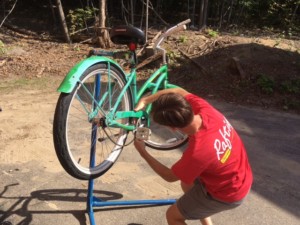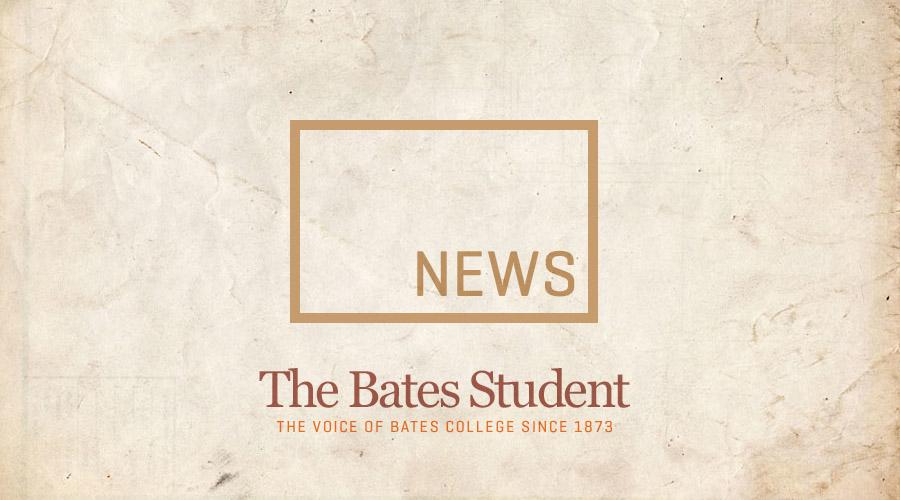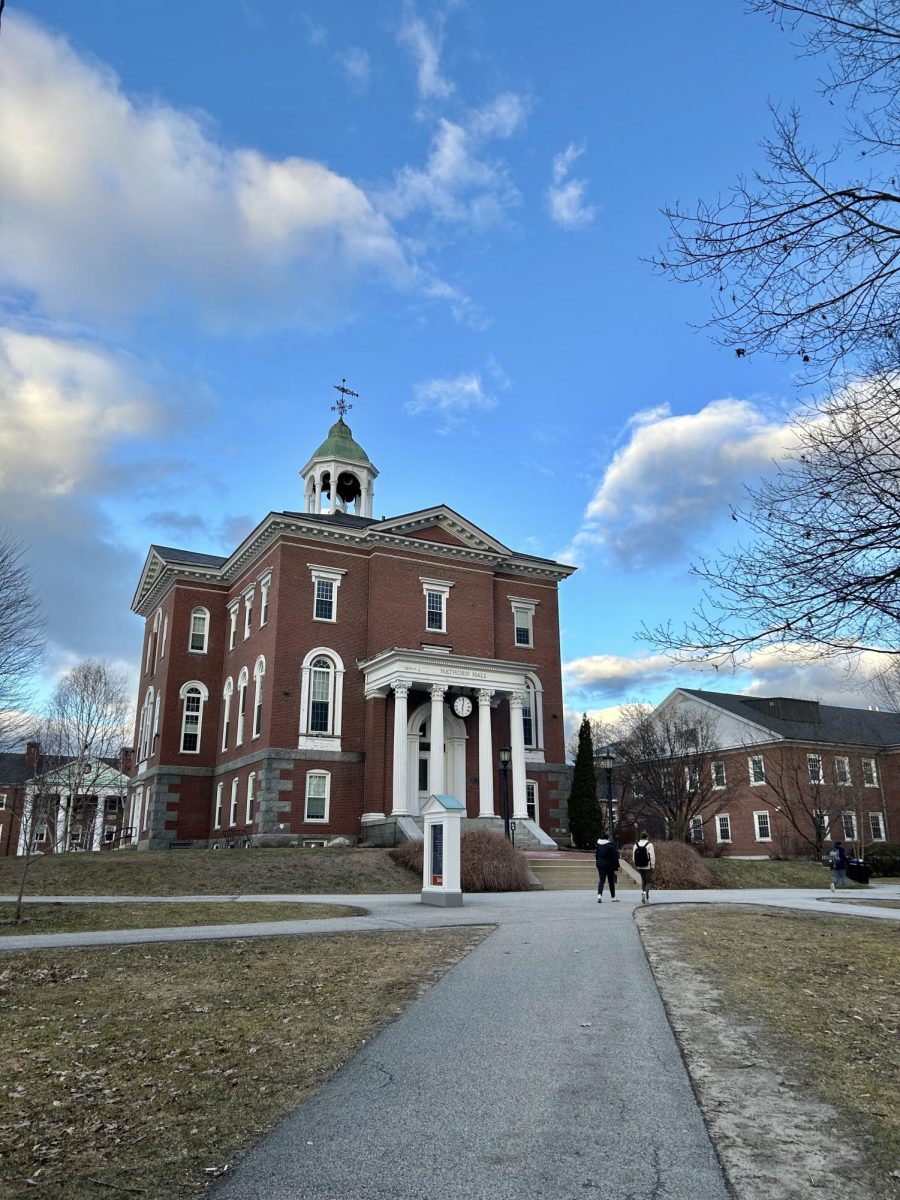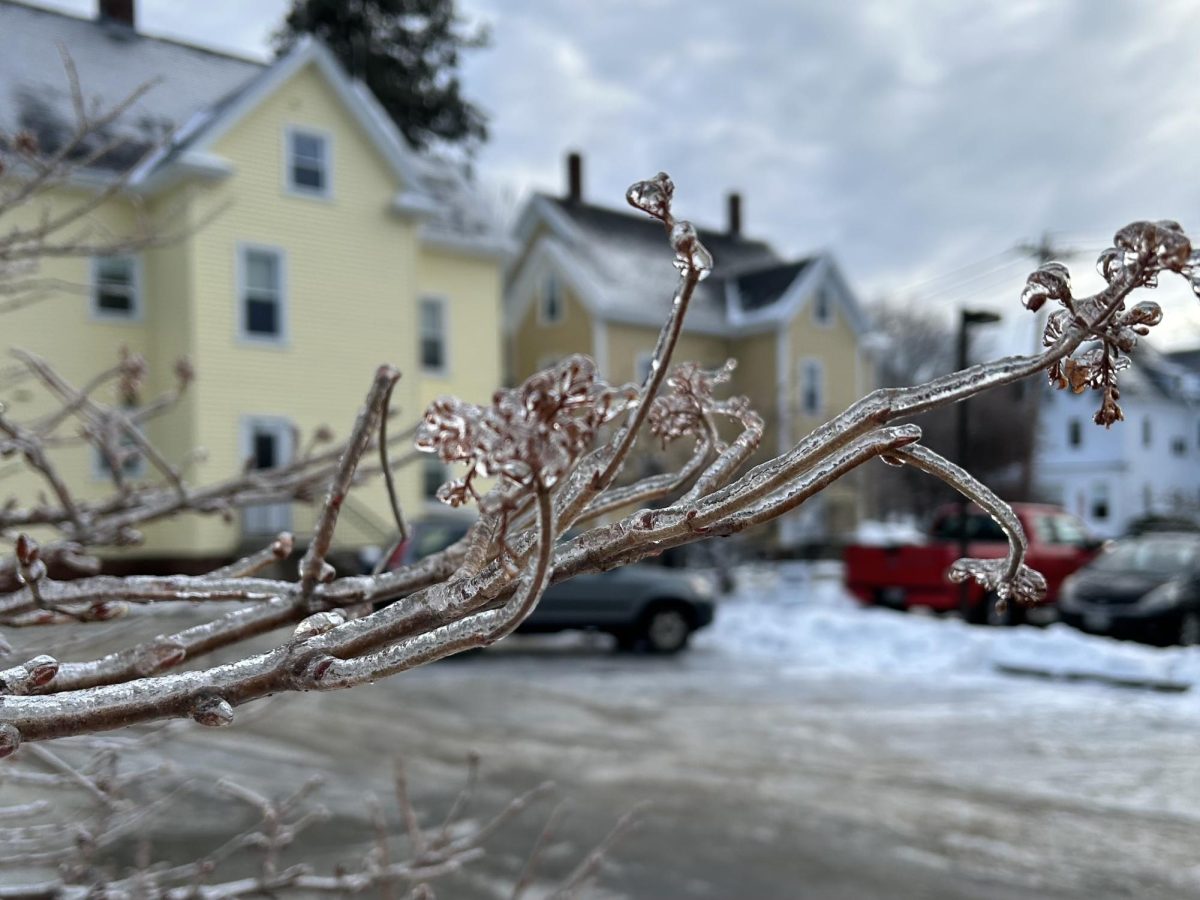Over the summer, Bates was upgraded to a Gold rating by the Association for the Advancement of Sustainability in Higher Education (AASHE), an organization that reviews the environmental impact of colleges. The rating is the second highest that the association gives, and places Bates ahead of most of the rest of the NESCAC. This new rating represents culmination of several years of work to lower Bates’ environmental footprint.
AASHE uses a wide array of indicators to create a rating for a school: ranging from carbon emissions to student involvement in environmental work. While sustainability has long been an important part of Bates’ culture, the school had never previously sent in the paperwork to receive a rating. According to Sustainability Manager Tom Twist, this meant that Bates was largely going unrecognized for its efforts.
“The fact that we had never submitted anything before means that we were on nobody’s radar as far as sustainability”, said Twist.
While the process of gathering the necessary data took over a year and half, taken together the statistics revealed a far more promising picture than Twist was expecting.
“My goal initially was just to not have the worst ranking. I thought that bronze would be embarrassing. But what we discovered by doing this report is that Bates is implementing all kinds of interesting sustainability measures.”
Several initiatives, led by students, staff and the administration, over the last few years have helped to make an AASHE Gold rating possible. One of the most significant, according to Twist, is a campus wide switch to a more sustainable, tree-based heating oil. The oil is not only creates fewer emissions than traditional clean fuels like natural gas but is also rather cheap. The result has been a “nosedive” in campus emissions.
Overall, Bates has reduced its carbon emissions by about seventy percent since 2001. The school is now on pace to meet its long term goal of being an entirely carbon neutral institution.
Just as exciting for Twist as the carbon decrease itself is the amount of student engagement that has helped make it possible. Student groups like the EcoReps have played a large role in cutting emissions, whether by lending students bikes to commute with or helping to facilitate the removal of paper cups from Commons.
Because college ranking services like the Princeton Review publishes AASHE ratings, Twist believes that a Gold rating will help Bates continue to attract applicants interested in sustainability.
“About of two thirds of incoming [college] students are interested in sustainability. For about a quarter of students coming in, sustainability is a major factor for them. So, if a school isn’t talking about sustainability, they’re not interested,” said Twist.
Only two schools, Stanford and Colorado College, have received AASHE’s highest rating, Platinum. Fewer than one hundred and thirty schools across the United States and Canada are Gold rated. Within the NESCAC, only Colby and Middlebury have also achieved Gold.
While Bates’ new rating represents culmination of several years of work, there is still much to accomplish. Ultimately, the goal for the school is to reduce its carbon output to zero, and several new initiatives to help make this goal a reality are already in the works.
Over the summer, Bates was upgraded to a Gold rating by the Association for the Advancement of Sustainability in Higher Education (AASHE), an organization that reviews the environmental impact of colleges. The rating is the second highest that the association gives, and places Bates ahead of most of the rest of the NESCAC. This new rating represents culmination of several years of work to lower Bates’ environmental footprint.
AASHE uses a wide array of indicators to create a rating for a school: ranging from carbon emissions to student involvement in environmental work. While sustainability has long been an important part of Bates’ culture, the school had never previously sent in the paperwork to receive a rating. According to Sustainability Manager Tom Twist, this meant that Bates was largely going unrecognized for its efforts.
“The fact that we had never submitted anything before means that we were on nobody’s radar as far as sustainability” said Twist.
While the process of gathering the necessary data took over a year and half, taken together the statistics revealed a far more promising picture than Twist was expecting.
“My goal initially was just to not have the worst ranking. I thought that bronze would be embarrassing. But what we discovered by doing this report is that Bates is implementing all kinds of interesting sustainability measures.”
Several initiatives, led by students, staff and the administration, over the last few years have helped to make an AASHE Gold rating possible. One of the most significant, according to Twist, is a campus wide switch to a more sustainable, tree-based heating oil. The oil is not only creates fewer emissions than traditional clean fuels like natural gas but is also rather cheap. The result has been a “nosedive” in campus emissions.
Overall, Bates has reduced its carbon emissions by about seventy percent since 2001. The school is now on pace to meet its long term goal of being an entirely carbon neutral institution.
Just as exciting for Twist as the carbon decrease itself is the amount of student engagement that has helped make it possible. Student groups like the EcoReps have played a large role in cutting emissions, whether by lending students bikes to commute with or helping to facilitate the removal of paper cups from Commons.
Because college ranking services like the Princeton Review publishes AASHE ratings, Twist believes that a Gold rating will help Bates continue to attract applicants interested in sustainability.
“About of two thirds of incoming [college] students are interested in sustainability. For about a quarter of students coming in, sustainability is a major factor for them. So, if a school isn’t talking about sustainability, they’re not interested,” said Twist.
Only two schools, Stanford and Colorado College, have received AASHE’s highest rating, Platinum. Fewer than one hundred and thirty schools across the United States and Canada are Gold rated. Within the NESCAC, only Colby and Middlebury have also achieved Gold.
While Bates’ new rating represents culmination of several years of work, there is still much to accomplish. Ultimately, the goal for the school is to reduce its carbon output to zero, and several new initiatives to help make this goal a reality are already in the works.









